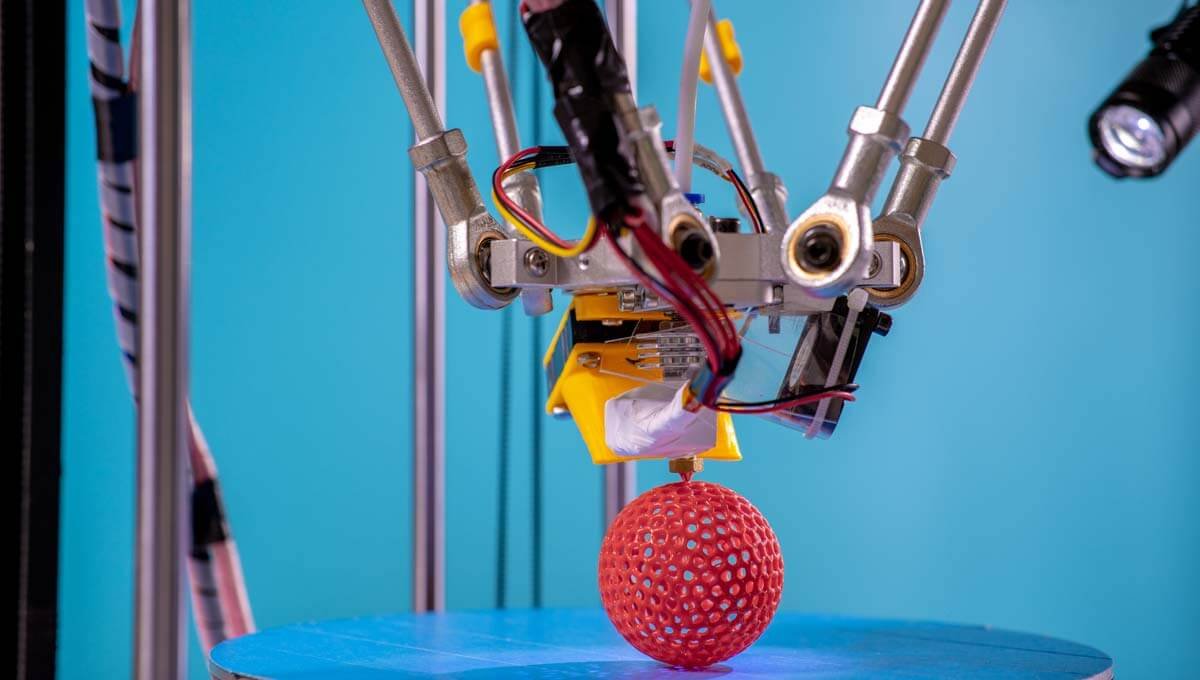So you’re interested in 3D printing, and you’ve come across the terms “Delta” and “Cartesian”. You’re probably wondering what these terms mean and what the differences between these two types of 3D printers are. To put it simply, **Delta and Cartesian refer to different types of 3D printers which utilize different mechanisms and movement systems.** Both technologies have their unique strengths and implications in the world of 3D printing.
Understanding Delta 3D Printers
What’s a Delta 3D printer, you might wonder? The name ‘Delta’ refers to its triangular or delta-like structure.
Delta 3D printers have three arms that connect the extruder to a fixed base. These arms move collectively to control the movement of the extruder in unique, circular motions. With their circular print beds, Delta printers offer a round surface area for prints.
Advantages & Disadvantages of Delta 3D Printers
Delta 3D printers are cherished for their speed. Thanks to the dynamic movement of three arms working in unison, prints can be completed faster than in Cartesian designs. Moreover, they are known for their exceptional vertical build space. Tall and cylindrical objects are a breeze for delta printers.
However, they are not without their drawbacks. For one, Delta printers can be tricky to calibrate than their Cartesian counterparts. Also, their circular print bed limits the breadth of objects they can print, unlike the square bed of Cartesian printers that may let you print broader objects.
Understanding Cartesian 3D Printers
On the other hand, Cartesian 3D printers, named after the Cartesian coordinate system, operate on a three-axis system: X, Y, and Z. These printers have a rectangular build platform and a head that moves linearly along these axes.
Advantages & Disadvantages of Cartesian 3D Printers
One of the main advantages of Cartesian 3D printers is their simplicity and ease of use. They are straightforward to assemble, operate, and maintain, which makes them popular among beginners. Their square or rectangular print bed also offers more options for larger, wider prints.
However, they fall short in speed and vertical printing capacity compared to Delta printers. But many users are willing to overlook these limitations for their ease of use and versatility.
Frequently Asked Questions
Which is better: Delta or Cartesian 3D printer?
There isn’t a definitive answer to this. It depends on your needs and preferences. If you require speed and want to print high, cylindrical objects, a Delta printer might be the best choice. However, if you’re a beginner or value ease of use and wide printing options, a Cartesian printer could serve you best.
Can a Delta printer print square objects?
Yes, to a certain extent. However, because of their circular print beds, they may not be the best choice for large, square or rectangular objects.
Are Cartesian printers slow?
While not necessarily slow, Cartesian printers are generally slower than Delta printers because of their mechanical system. However, technology continues to evolve, and some high-end Cartesian printers offer excellent speed.
Final Thoughts
In the grand scheme of things, both Delta and Cartesian 3D printers have their places in the world of 3D printing. Delta printers provide speed and a high vertical build space, making them ideal for certain projects. In contrast, Cartesian printers offer simplicity and versatility, perfect for beginners and those who print broader objects. It all boils down to what you need from your 3D printer.
Remember, both these printers are tools at your disposal to bring your creativity to life. Identify your needs, understand the constraints, and make an informed decision. Regardless of your choice, the world of 3D printing is an exciting one to explore. Happy printing!
